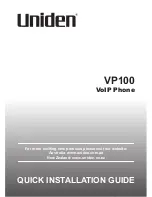
56050801 - Rev B
2
© 2017 Telguard
Features
This section summarizes key features of the Telguard TG-1.
Operating Mode
The Telguard is a digital cellular Data/SMS transmission device that is installed
at the protected premises to provide alarm transmission for security systems.
Multiple Alarm Format Support
The Telguard TG-1 supports multiple alarm communication formats.
Note: The Telguard unit’s default program setting is for auto detection of the panel
alarm format.
Auto Format Detect feature allows the Telguard to adapt to receive any listed format.
If the alarm panel’s format is changed for whatever reason, the Telguard will adjust to
accept the new format.
In order for the alarm panel to be compatible with the Telguard, the alarm panel must
be programmed to transmit alarm messages to the central station using one of the
following non-extended formats:
Pulse Formats:
o
3+1 pulse; 10pps, Double Round, 1400 Hz ack
o
3+1 pulse; 20pps, Double Round, 2300 Hz ack
o
3+1 pulse; 40pps, Double Round, 2300 Hz ack
o
4+2 pulse; 20pps, Double Round, 1400 Hz ack
o
4+2 pulse; 20pps, Double Round, 2300 Hz ack
o
4+2 pulse; 40pps, Double Round, 2300 Hz ack
Contact ID
Modem IIe/IIIa
2
/4
SIA2 (SIA-DC-03 level 2 release at 300 baud)
DMP
Hexadecimal account numbers can be used with 3+1 or 4+2 formats, as well as Contact ID
and Modem (4 or 10 digits for Contact ID, 4 digits for Modem).
Complete Supervision of Communication Path
The Telguard TG-1 continuously supervises the cellular communication path.
If the
cellular communication path becomes inoperative, the Telguard generates a relay
trip output that can be connected to a zone input of the host alarm panel and/or
used to control remote annunciation devices.
No Service Condition (NSC)
The Telguard declares a no service condition (NSC) when the Telguard device is
unable to register with the cellular network.
NSC is programmable to trip the supervisory relay output (STC relay) after a
variable period of time.
The STC LED will flash 4 times immediately after losing
cellular service and independent of the STC assertion and programmed assertion
delay. NSC restoral occurs immediately after cellular service has been acquired.
Radio Communications Failure Condition (RFC)
Radio communications failure condition (RFC) is declared when the Telguard is
unable to transmit over the cellular network even with acceptable signal strength.









































